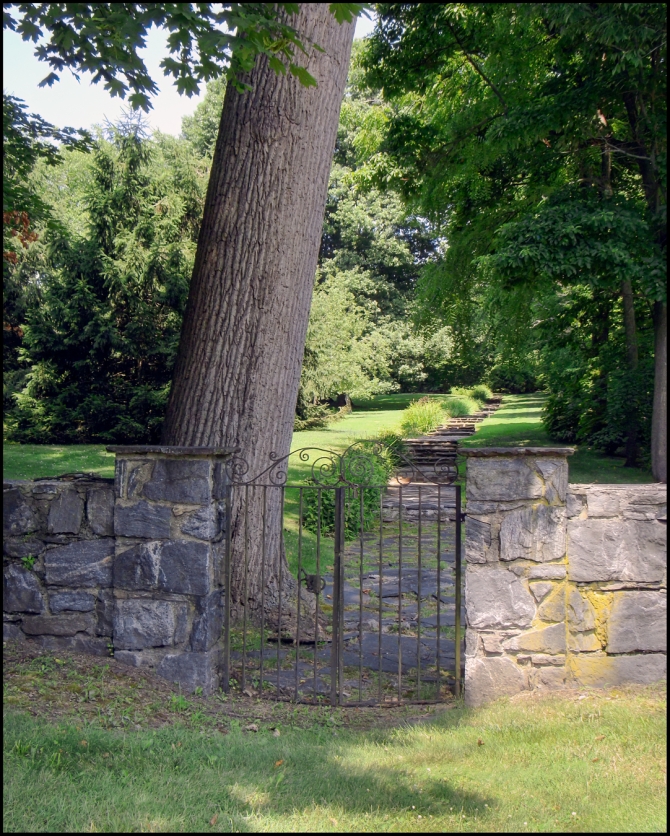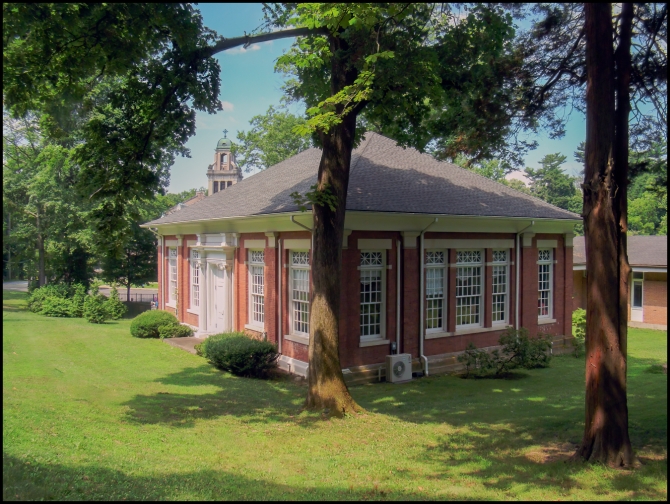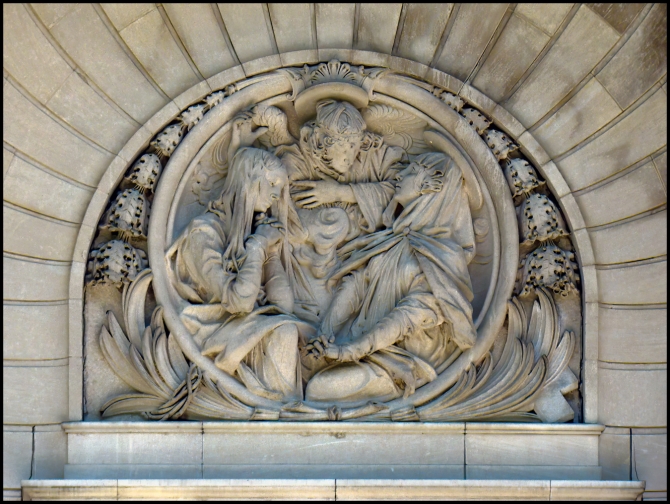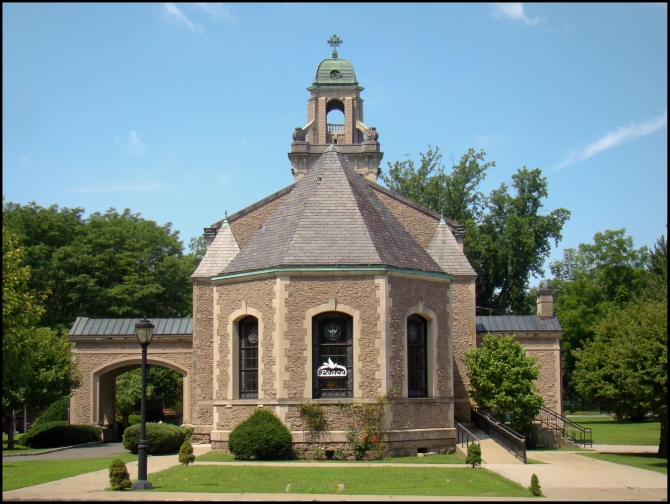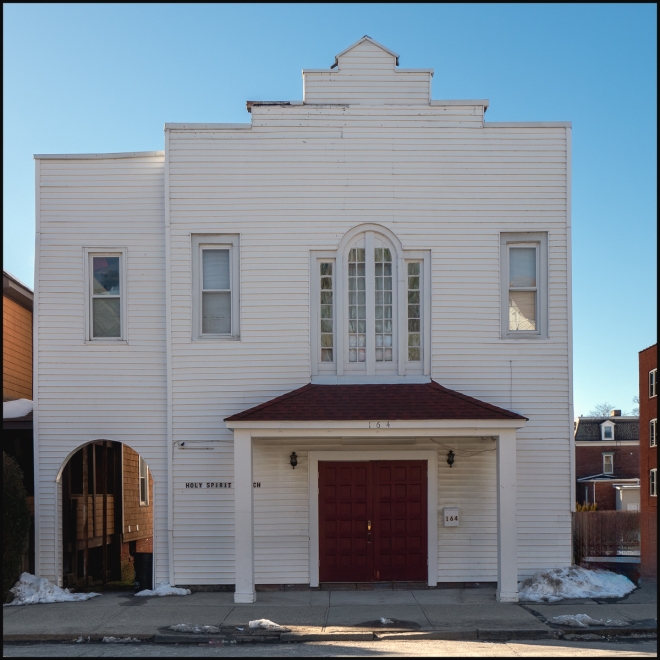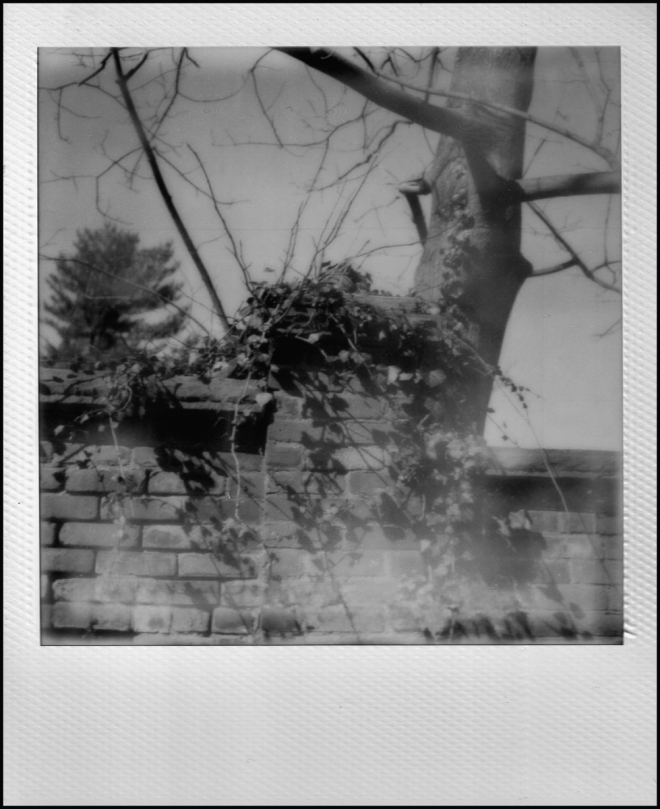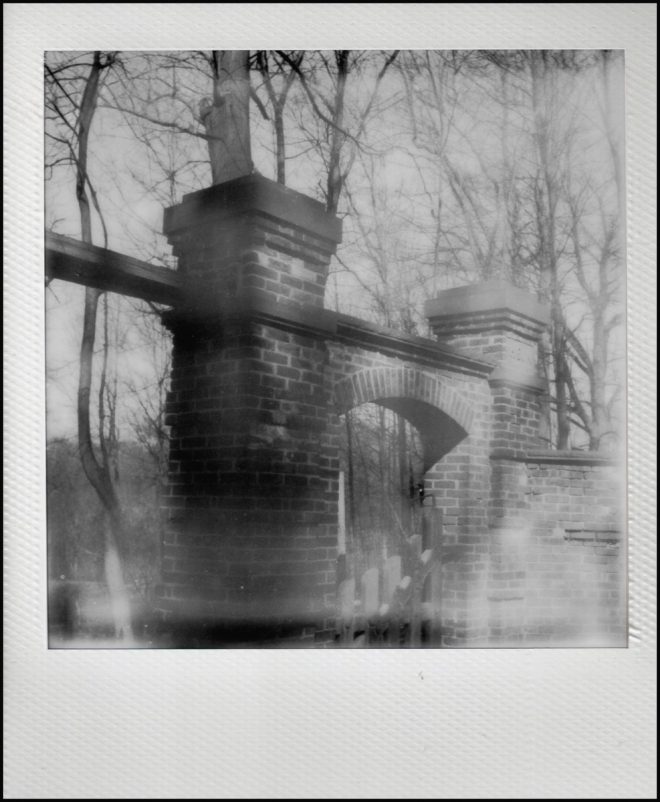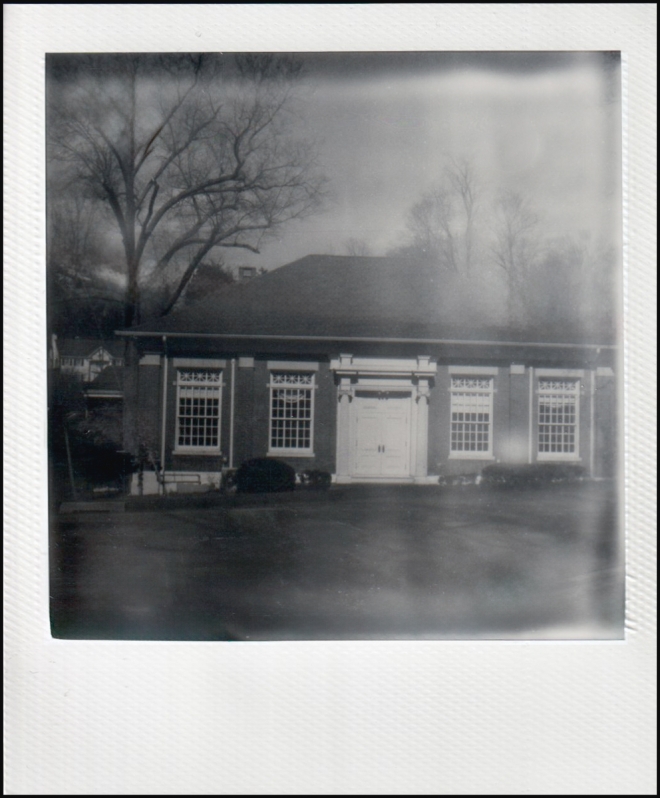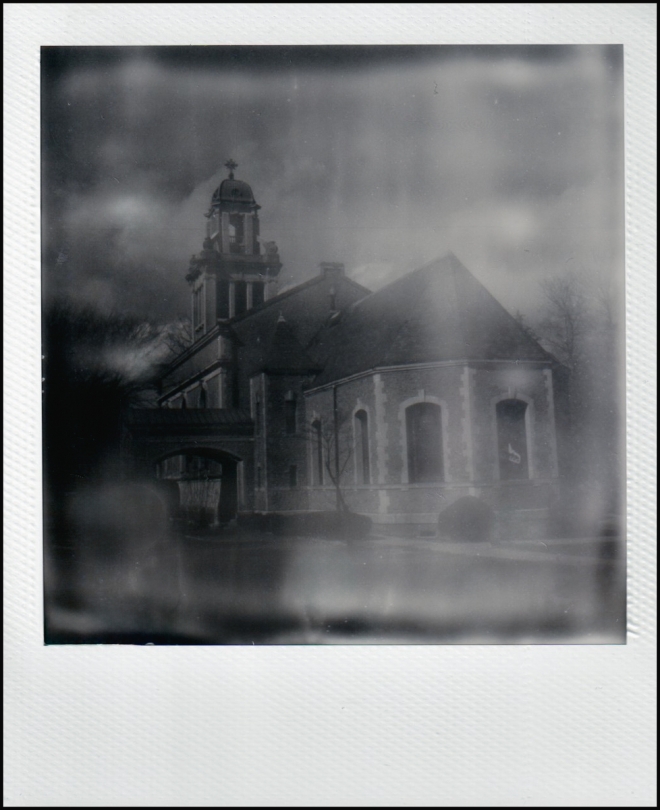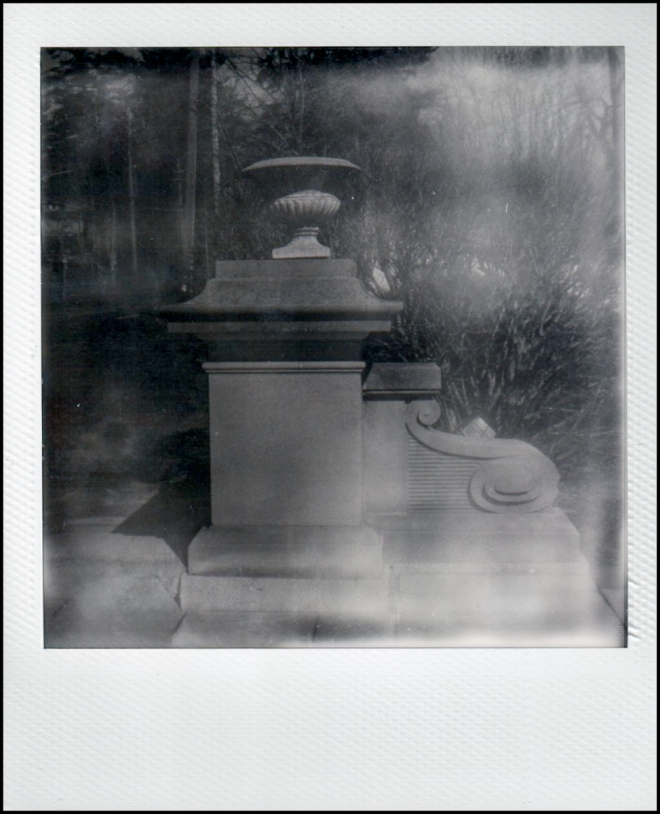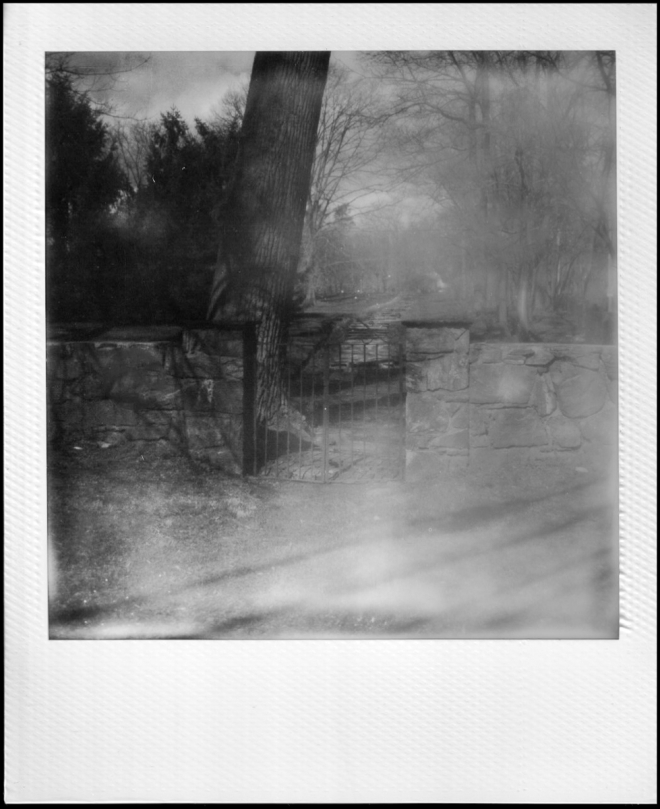Of course, after I got my hands the Polaroid SX-70 mentioned in the previous post I rushed out immediately, eager to try it out – right? Actually, that was not the case. I think that I acquired the camera and film in 2022. When I opened the film package today, I noticed that the film was made in 2021, which of course makes it three years old. Polaroid warns that you should not use film more than one year old, which may have been a contributing factor to what happened today.
So how did things go? Well, I put the film in the camera and the dark slide popped out as it should. So far so good. I left the house and walked down towards the Hudson River. On the way I spotted something that I thought would make an interesting picture. I carefully focused, framed the picture and pressed the shutter release. The camera whirred but no picture was ejected. After tugging for a while, I managed to get it out. Of course, the picture was blank. I continued walking and took another picture with the same results. The third picture at least ejected from the camera without any assistance with me, but it looked as if it had been taken with a 150-year-old camera rather than 52-year-old camera that it is. I continued walking and taking pictures and they all ejected and were all pretty much of the same quality. When I got to the last two pictures, I pressed the shutter release…and nothing happened. Frustrating, but then I remembered that while the old Polaroid film allowed 10 exposures, the modern variant only allows eight. I imagine that the first two exposures did not register on the frame counter, which showed that there were two left when in fact there the film pack was finished. When I got home, I couldn’t get the film pack out of the camera, but after some YouTube browsing I managed to figure out how to remove it and also how to clean the rollers (which now had some bluish grey gunk on them, probably from my efforts to remove the film from the camera when it wouldn’t eject by itself).
I don’t consider today’s efforts a total disaster though (although I might have done if I hadn’t gotten any pictures at all). I was bit disappointed with the results, but not at all surprised. It’s an old camera that’s been sitting around for a while. The film was beyond its sell by date. Clearly the camera is not working properly, but all things considered I quite liked the results. They have a certain vintage look that has a charm of its own.
I also wanted to see whether or not I’d like the instant camera experience. I was surprised to find that I did, and I intend to continue. I might see if I can get the camera repaired. I browsed around for a while and discovered that a lot of people had good things to say about Brooklyn Film Camera. I live close to NY City, so I’ll probably give them a call, and if possible, take it in for them to have a look. If they can fix it for a reasonable cost I’ll probably do it. If not I might consider getting another one that they already renovated. It’s such a beautiful camera that I wouldn’t at all mind putting it out for display.
All things considered it was an enjoyable experience.
Taken with a Polaroid SX-70. Pictures messed with in Adobe Photoshop Lightroom

